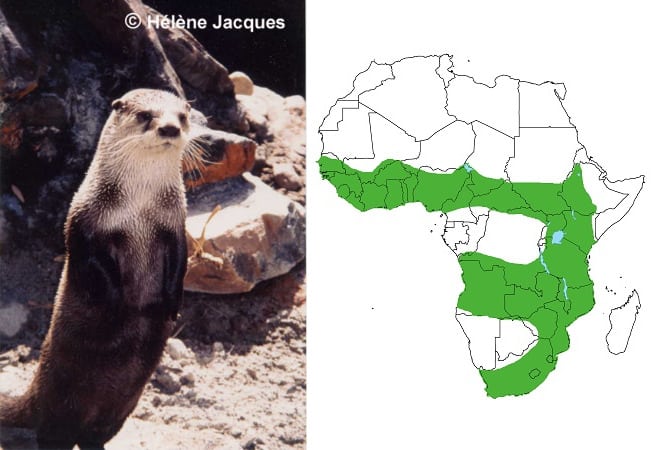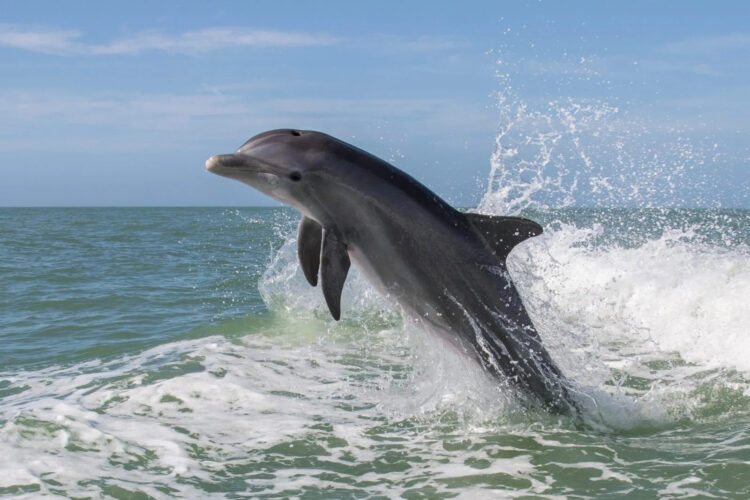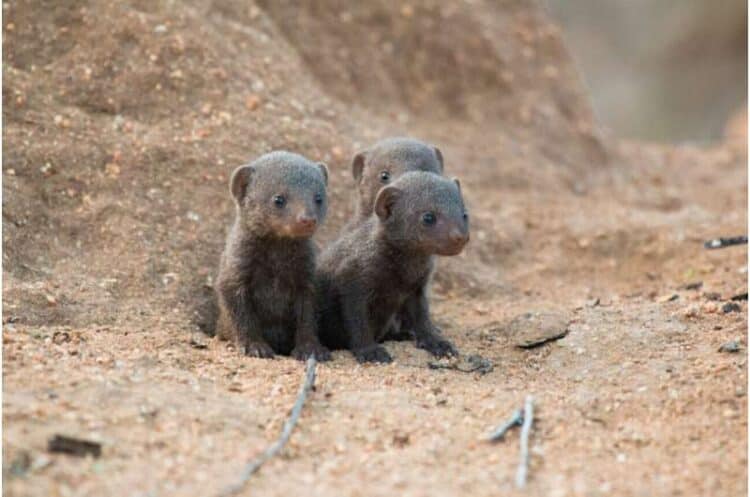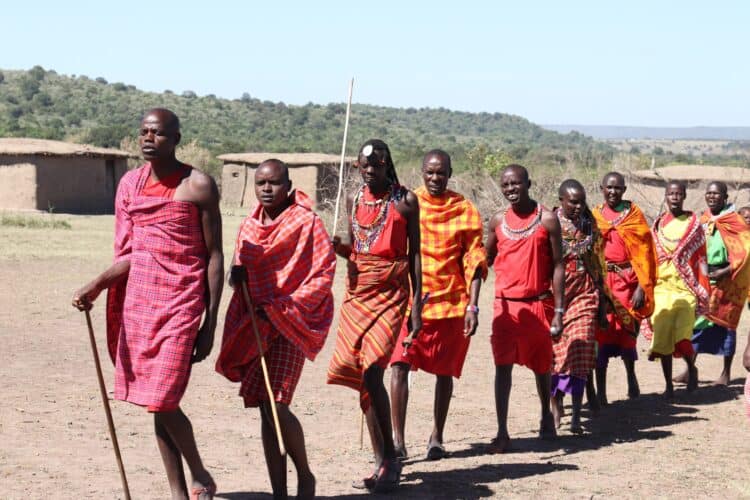The latest Red List update by IUCN, the International Union for Conservation of Nature, has placed an alarming 12 of the 13 species of otter worldwide showing a declining population, with the North American river otter the only one shown as “stable”. Of those 13, Sub-Saharan Africa is home to three species:
The spotted-necked otter (Lutra maculicollis) is fairly widely distributed in sub-Saharan countries, from Senegal to Ethiopia and down to South Africa, but their detailed distribution is not fully understood.

The African clawless otter (Aonyx capensis) has the widest distribution of all the African otters although it is mostly absent in the Congo basin.

The Congo clawless otter (Aonyx congicus) has a very patchy distribution in the Congo Basin and little is known about its ecology and biology. Most of what we do know about their behaviour has been learnt through the care and rearing of orphaned cubs in the Democratic Republic of Congo (DRC).

While some suggest that populations are starting to recover, the IUCN’s upgrading of all three of the species from “Least Concern” to “Near Threatened” shows, to the contrary, that the otter populations do continue to decline, mainly due to increased human population.
One of the otters’ main problems in terms of protection and conservation is that they are often eclipsed by the more glamorous animals that need protected. As seen in Asia, with tigers, leopards and rhinos, efforts are more aimed at the high profile animals. Africa, boasting a wide array of protected and endangered animals is no different. There is no suggestion saying that efforts to help these other animals should stop, more to emphasise that the otter population within Africa is suffering just as much as other species, without anywhere near as much efforts to help protect them. With a very limited amount of people focusing their time on otters, there is little to no up to date information on otters in Africa. This is why IOSF (the International Otter Survival Fund) decided to hold a workshop in the College of Wildlife Management, Tanzania. Similar workshops had been held in Asia with great success adhering to Asian needs. Clearly Africa has very different needs so the workshop’s format had to be adapted in order to meet the needs of this vast continent. The aim of the workshop was to train participants in field techniques, public awareness programmes, law enforcement and general conservation issues through a mix of classroom studies, discussion and practical field work.
Back in 1998 the IUCN/SSC Otter Specialist Group recognised that otter distribution and status in Africa should be a priority and in 2004 they stated further that Africa should be top of the list for project support and there was a great need to establish a network of people working on the species. However, until now nothing had been done, so this workshop was the first Pan-African event of this kind.
Participants came from ten sub-Saharan African countries – Benin, The Gambia, Ghana, DRC, Ethiopia, Kenya, Malawi, Rwanda, South Africa and Tanzania. Each participant came from difference backgrounds: park rangers; people already working with otters; ecologists; and people working in associated fields, such as wetland protection. All came with the same view in mind, how could they help protect and recover otter populations throughout Africa.
Our wildlife today is faced with increasing issues worldwide: habitat loss, pollution and climate change. These issues affect otters worldwide and Africa is no different. On top of this, fisherman believe otters are damaging and taking their assets, such as nets and fish, an expensive loss for poor families so heavily reliant on what fish they can catch.

In some areas otters are hunted for fur and traditional medicines. At the workshop we heard of many ways that body parts are used, such as the eyes for eye infections, skin to ease childbirth, bone for fever and the meat to cure infertility. There is even a belief that the skin can deflect bullets! Some of these beliefs are ancient and a part of the tribal culture so it is difficult in these circumstances to change attitudes, but by working within the community it is possible to show that such practices are no longer acceptable.
However, the main problem that otters face in Africa is lack of awareness, which, in turn, leads to a lack of funding for research, education and rehabilitation. Participants agreed to do a survey to find out what people actually knew about otters, and results already show that, including professional biologists, some people are totally unaware of their existence in Africa. Obviously, people know a lot about animals of Africa, but it seems that not many know anything about otters within the continent.
The classroom element of the workshop included various presentations on topics such as identification, behaviour, ecology, survey methods, field signs, etc, and IOSF’s Dr Paul Yoxon gave a presentation on otters in a world context.
There is a major problem with identifying the field signs of spotted-necked otters, as there are three different versions in texts and literature. As a result, Jan-Reed Smith is going to approach zoos and get a definite guide to enable individuals to recognise field signs of otters clearly.
We heard about various other studies. Engedasew Andarge is working with fishing communities around Lake Tana in Ethiopia, and Hetherwick Msiska told us of his long-term studies of the spotted-necked otters in Malawi. On the environmental side, Yustina Kiwango from the Tanzanian National Parks Authority (TANAPA) looked at the problems facing Tanzania’s wetlands and what efforts are being made to address these problems. Various examples of outreach were discussed: Jan Reed-Smith has been a part of the African Otter Outreach Project working on Rubundo Island National Park (Tanzania) and Hobokela Mwamjengwa, the Outreach Warden for the Park gave an overview of their work there. Hugues Akpona currently works in DRC but he has also done outreach in Benin which he outlined.
A highlight was clearly the presentation on Mazu’s story by Rita Chapman, Lubama Delphin Kumbi, and Mubuma Chico Lunko (Sico) of the Kikongo Otter Sanctuary in the Democratic Republic of Congo (DRC). Rita recounted the story of how they raised the two Congo clawless otters between 2010 and 2012 which led to the formation of the Kikongo Otter Sanctuary. There was so much interest in these animals from the local people that they rapidly became “celebrities” and indeed ambassadors for all otters. Since then they have continued their work with the community and Delphin told us how he had been a hunter from the age of about 17 but following his experience with the otters he no longer hunts. When asked by his friends why he no longer hunts he told them “I am seeing that our animals are starting to disappear and you should also stop killing animals because in a few years we will have nothing left.” He is now beginning to see a change in his friends too. Sico used to be a fisherman and has found an otter caught in a fish trap. Now he has fish ponds and plants fruit trees. These two men are not scientists but they are now devoted to conservation not just of otters but all wildlife and they are an inspiration in the way they work with their own community to help them to understand the impact they are having on their own area and its wildlife.
Within days of their return to the Congo, another young cub arrived on the doorstep and Delphin and Sico are one more taking care of the new charge.
Much of the time within the workshop was dedicated to discussions on otters, their conservation, as well as some social and educational tools. The educational material cannot be uniform for the whole world and has to be adapted to ensure it is relevant to each and every area and community it is going to be used. For example, the educational tools which we used for our Asian workshops will offer little benefit to those at the African workshop, and vice versa, just as different parts of Africa need to be able to mould and adapt the educational material we offered to fit their communities and areas. The IOSF children’s education pack “Let’s Find Out About Otters” and the Otter I.D. cards prepared for the workshop will be translated into local languages in order for them to be more beneficial across Africa. Two posters were designed, one for fishermen and one for educational purposes and these will be prepared by IOSF before being distributed to all participants who will translate into local languages before printing.
Unfortunately we were not able to find any otter spraint on field days, demonstrating how hard it can be to monitor otters. However, we had envisaged a difficulty in obtaining spraints and had pre-arranged for some to be brought from Rubundo, Tanzania. Having this spraint available made it possible for workshop participants to familiarise themselves with it and how to process and analyse what an otter has been eating, as well as looking at problems and limitations to using this data. Since the workshop we have already heard of some participants finding otter spraint, which has provided us with new information on distribution.
The workshop identified long and short term goals for future work. Research alone is not conservation, but all programmes must be founded on recent sound scientific data. By working with communities we can generate interest and obtain base-line information on otters.
Public awareness is essential and a Facebook page (https://www.facebook.com/AfricanOtter1?fref=ts) has now been set up for people to post photographs of otters and their signs, linked to a confidential form for more detailed location information. This is linked to the IOSF website (www.otter.org) and the African Otter Outreach Project (https://www.facebook.com/pages/African-Otter-Outreach-Project/181450325232204?fref=ts). A website will also be designed linked to the IOSF website and this will hopefully be available in English, French and possibly Swahili. An online forum has been created for people to share experience and seek help and to share education tools. A 2nd African Otter Workshop is planned for 2017 located in another region of Africa to facilitate attendance from other nations.
Since the workshop, new data is already being received. In 2005, possible spotted-neck otter spraints was found by Lake Manyara, Tanzania, and since then there has been an actual sighting, confirming their existence in that region. They have also been seen at Lake Kivu in Rwanda, and otter signs have been found at Liparamba Game Reserve, Tanzania, although as yet the species has not been confirmed.
Where short term goals are gaining some research and slowly educating people in how to identify otters and monitor their existence, long terms goals are to finally reverse the decreasing population and start to see a rise in otters numbers. We will need to work with individuals who work in otter habitats and make them aware of their existence and conservation. Working alongside them we can develop further awareness programmes, using posters and media and meetings, with the aim of bringing in politicians of all levels (local, regional and national) so everyone clearly understands what we are trying to achieve.
We need to work alongside local communities. We understand that people need to make a living and need to survive, but hopefully offering and educating them on alternatives that won’t interfere with our attempts in otter conservation will bring about a preferable alternative for both parties. For example, in the Gambia fishermen have been encouraged to turn to oyster culture which does not bring them into competition with otters.
But a real problem area will be the traditional use of otters and working with community leaders will be key to tackling this.
In time, with everyone working together on conserving otters and their habitats, we will begin to see a resurgence of otter populations, in Africa, and worldwide.
Thanks to all the attendees: Akpona, A. H. (Université d’ Abomey-Calavi, Benin – African Wildlife Foundation, DRC); Andarge, E. (Addis Ababa Univ., Ethiopia); Bada, P. (African Mobile Nature, Benin); Chapman, R. (Kikongo Otter Sanctuary, DRC); Genja, E. (Game Warden, Mpanaga/Kipingere Game Reserve, Tanzania); Jallow, M. (CITES, The Gambia); John, A. (Ecologist, Tanzanian Park Authority, TANAPA, Gombe National Park, Tanzania); Jonah, F. (Univ. of Cape Coast, Ghana); Kaitila, R. (Ecologist, TANAPA Lake Manyara National Park, Tanzania); Kamugisha, J. (Game Warden, Selous Game Reserve, Tanzania); Kibasa, W. (Ecologist, TANAPA, Rubondo Island National Park, Tanzania); Kiwango, Y. (Sr. Ecologist, TANAPA, Tanzania); Kumbi, L. D. (Kikongo Otter Sanctuary, DRC); Lunko, M. C. (Kikongo Otter Sanctuary, DRC); Mgomo, W. (Game Warden, Liparamba Game Reserve, Tanzania); Misiska, H. (Concern Otter Association, Malawi); Msyani, E. (College of Wildlife Management Mweka, Tanzania); Mwamjengwa, H. (Outreach, TANAPA, Rubondo Island National Park, Tanzania); Mwihomeke, F. (SEKOMU Univ., Tanzania); Nyamenya, P. (KISTOCH Otter Clubs, Kenya); Okes, N. (Univ. of Cape Town, South Africa); Ondiek R. (Egerton & Boku Univ., Kenya); Reed-Smith, J. (African Otter Outreach Project, U.S.A); Sawo, A. (Abuko Nature Reserve, The Gambia); Tuyisenge, J. (Lake Kivu Monitoring Project, Rwanda); Yoxon, G. (IOSF, Scotland); Yoxon, P. (IOSF, Scotland)
The workshop was funded by: Anderson-Rogers Foundation, Animal Defence Trust, Columbus Zoo, The Rufford Foundation, Sacramento Zoo, and private donors.
Grace Yoxon
Head of Operations at the International Otter Survival Fund
- Web |
- More Posts(6)







Leave a Reply